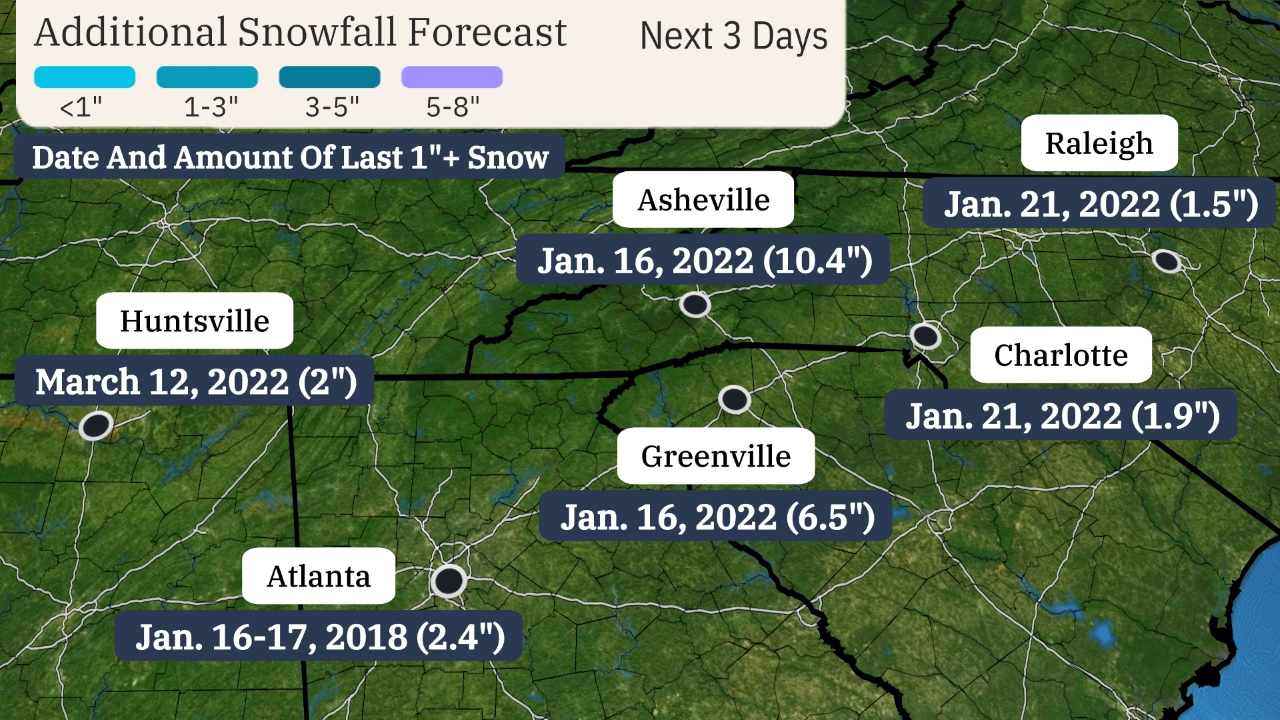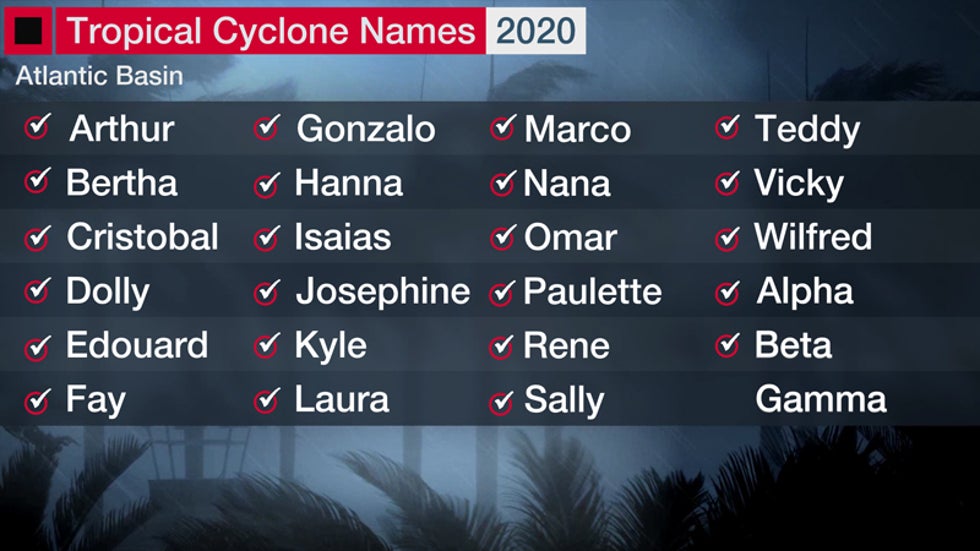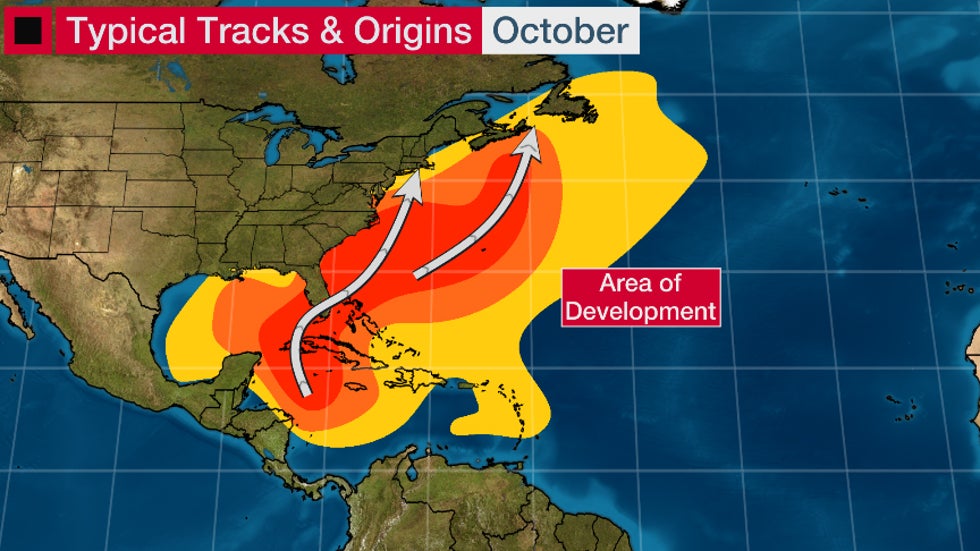Linda Lam and Chris Dolce
Tropical development is possible later this week or this weekend in the western Caribbean Sea, one of October's typical hot spots.
Various computer model forecast guidance suggest there will be an uptick in stormy weather and lowering pressure in the western Caribbean the first few days of October.
A stalling-out frontal boundary arriving from the Gulf of Mexico, a disturbance known as a tropical wave moving westward through the Caribbean Sea and winds aloft that could spread apart over the western Caribbean Sea could help develop a tropical depression or storm.
For now, the National Hurricane Center (NHC) says there is a medium chance of tropical development in the western Caribbean Sea during the next five days.
 Area to Watch
Area to WatchIt's too early to know any additional forecast details, including where this potential future system might track.
The early takeaway is that those in the western Caribbean or near the Gulf of Mexico need to be aware of the potential for a developing system. Check weather.com for updates as those details become more clear over the next several days.
The next tropical storm to form in the Atlantic would be named Gamma.
(MORE: All the Records the 2020 Hurricane Season has Broken So Far)

Western Caribbean an October Hot Spot
Even though the climatological peak of the hurricane season – Sept. 10 – has passed, residents along the Gulf and East coasts need to remain prepared for a hurricane. Roughly one-fifth of all U.S. hurricane landfalls have occurred in October and November.
On average, one hurricane forms every year in October, according to the National Hurricane Center. The most hurricanes to form in October was five in 2010.
By October, the formation zones of tropical storms and hurricanes shift westward toward the western Caribbean Sea, eastern Gulf of Mexico and far western Atlantic Ocean as the "Cabo Verde" portion of the hurricane season, featuring the development of African easterly waves in the eastern Atlantic Ocean, fades.

In South Florida, October is the month with the most hurricane direct hits. Over two dozen October hurricanes have passed within 100 nautical miles of downtown Miami since 1851, according to NOAA's best track database.
Hurricane season quiets down as we head into November, especially for the United States.
There are just three known U.S. hurricane landfalls in the month of November dating to 1861.
Hurricane Kate in 1985 was the latest-in-season hurricane landfall in the U.S. Kate came ashore at Mexico Beach, Florida, on Nov. 21, a week before Thanksgiving.
The Weather Company’s primary journalistic mission is to report on breaking weather news, the environment and the importance of science to our lives. This story does not necessarily represent the position of our parent company, IBM.
The Weather Company’s primary journalistic mission is to report on breaking weather news, the environment and the importance of science to our lives. This story does not necessarily represent the position of our parent company, IBM.

No comments:
Post a Comment